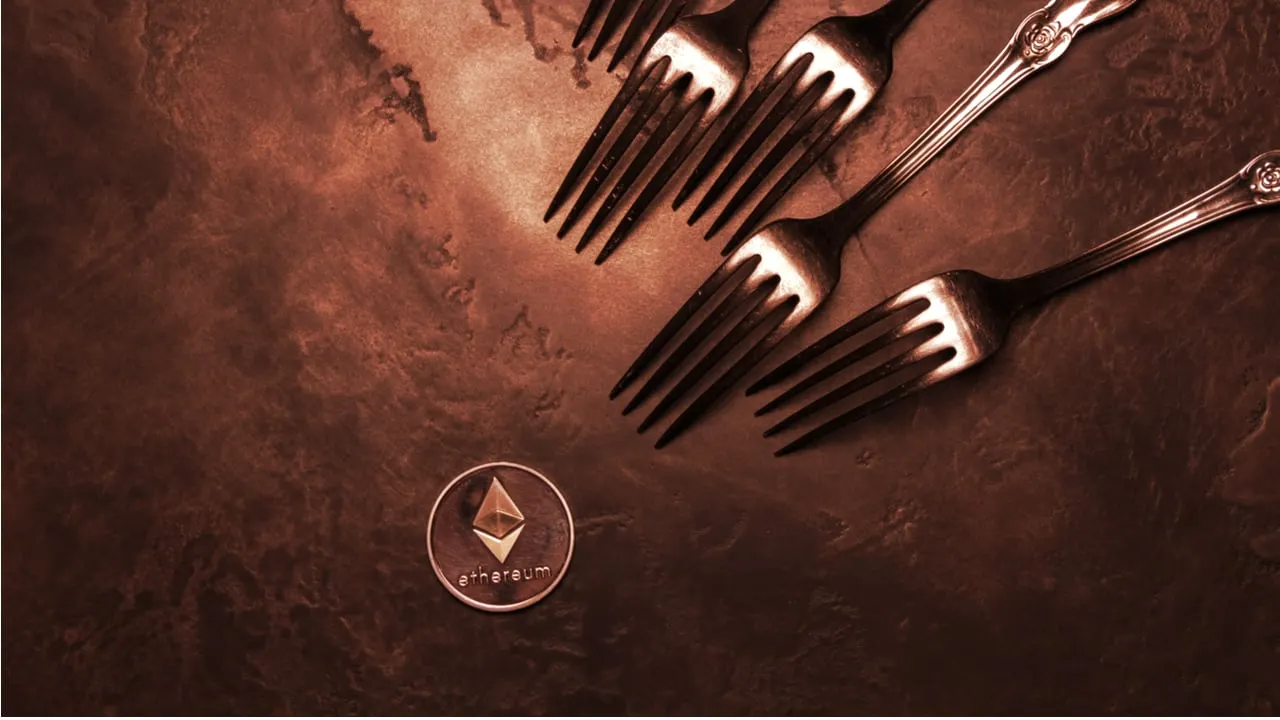You're driving steadily down the road when you see a yellow light. Do you a) gun the engine and try to make it through the intersection before the light turns red, or b) stop and wait for the green light before proceeding?
That's the type of choice Ethereum core developers are faced with in the much-anticipated move to proof of stake. While discussing whether to immediately deal with the impending difficulty bomb—which will make the network more sluggish—in a meeting last Friday, they decided to ignore it for now as they gun the engine toward proof of stake. The risk is that they might have to come to an abrupt stop if their timing is off.
All of this is happening as Ethereum users wait for "The Merge." No, that isn't a John Carpenter film about symbiotic zombies or Elon Musk's latest power play.
Rather, The Merge is Ethereum's move from proof of work to proof of stake. Whereas proof of work involves "miners" using their computing power to validate transactions in return for the chance to earn ETH, proof of stake involves ETH holders locking up a share of their coins to validate transactions and receive a share of the rewards.
It's part of a broader move—along with the introduction of "shard chains" and other measures—toward a faster, cheaper, less-congested network known informally as Ethereum 2.0.
And there's even an element written into Ethereum's code to incentivize this transition and make sure miners don't refuse to come along after the switch: the difficulty bomb.
The difficulty bomb works by making it harder to mine new blocks on the proof-of-work chain, meaning it takes miners longer to crack the cryptography. The foreseen upshot is that mining becomes so time-consuming (and the network becomes so slow) as to make it potentially unprofitable.
There is a way to stop it, however. Developers created the bomb, and—with some effort—they can delay it. By essentially re-setting the clock, they buy themselves more time to create the proof-of-stake network itself. Ethereum developers have already done this multiple times, most recently with the Arrow Glacier upgrade in December 2021.
But delaying the difficulty bomb takes some time and energy and could pull resources away from prepping for The Merge. While at least one developer on the call emphasized that the update itself was "trivial," coordinating users to make the upgrade is not.
Moreover, there's a psychological impact at play. The ticking bomb is taking up mental energy, but any distraction from the larger network shift could lead to a fresh round of sighs from ETH holders and investors. In April, the Ethereum Foundation pushed back its informal estimated delivery date from Q2 of this year to Q3—and many users are growing anxious for the delivery to ship.
Pushing the bomb back to say December (hypothetically speaking) which gives ample time for Merge testing and coordination sounds great but optics wise looks bad which tbh shouldn’t matter but in reality it does.
— Christine Kim (@christine_dkim) April 29, 2022
Developers' prep work is currently in the testing phase. In early April, devs created a "shadow fork" of the mainnet in which they copied Ethereum blockchain data to a testnet to see how the real network might function after the switch. Devs will do this again this week.
Tim Beiko, who leads the All Core Devs meetings for the Ethereum Foundation, argued in Friday's meeting that it was best to re-evaluate the difficulty bomb in the next meeting on May 13 or even on May 27, noting that the current Ethereum experience wasn't being degraded and wouldn't be for several weeks. The best route forward, he said, was to continue with testing and see where things stand later.
The current average block time is just over 13 seconds. Developers briefly discussed how long would be too long for network users to handle, given that each slowdown creates further congestion. Twenty seconds? Thirty seconds? If they mistime things, the network could quickly become slower than molasses and put pressure on developers to address the bomb.
But with The Merge within reach, even half a minute may not be a big deal. As Vitalik Buterin, the co-founder of Ethereum, stated: "We have to evaluate the pain of doing an extra delay hard fork versus the pain of living with 21 or 25 second blocks for a while, which is something we have done and the world didn't end."
He added with an optimistic note for a future where the difficulty bomb no longer exists: "Ultimately this is the last time the block time is going to be anything other than 12 seconds."

